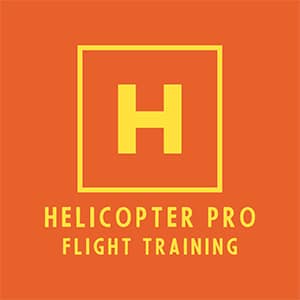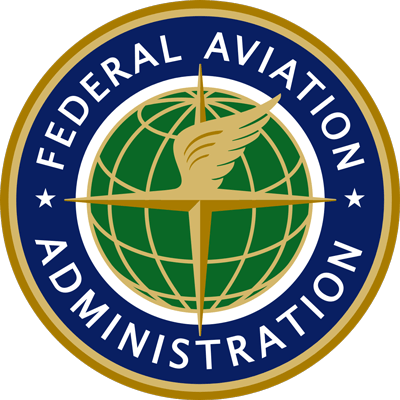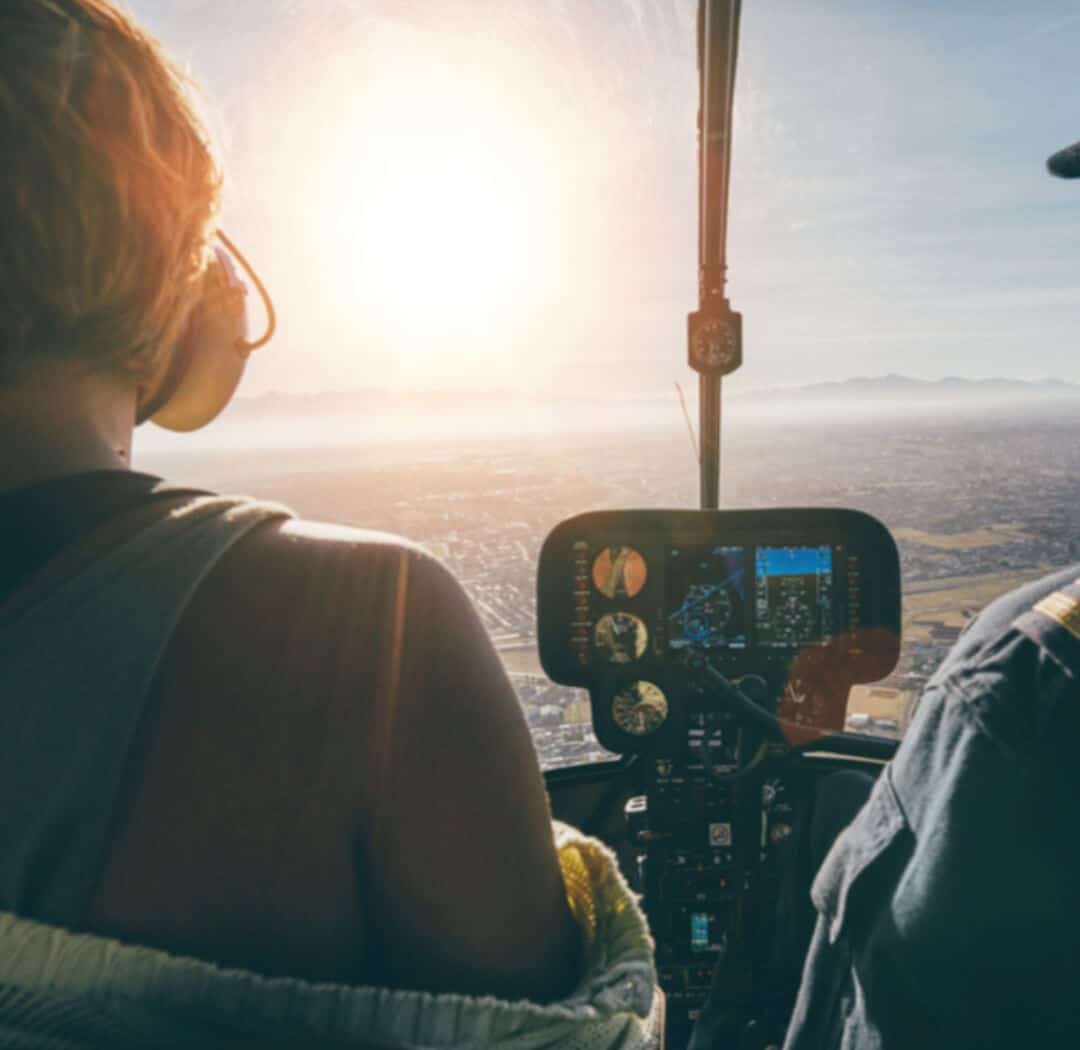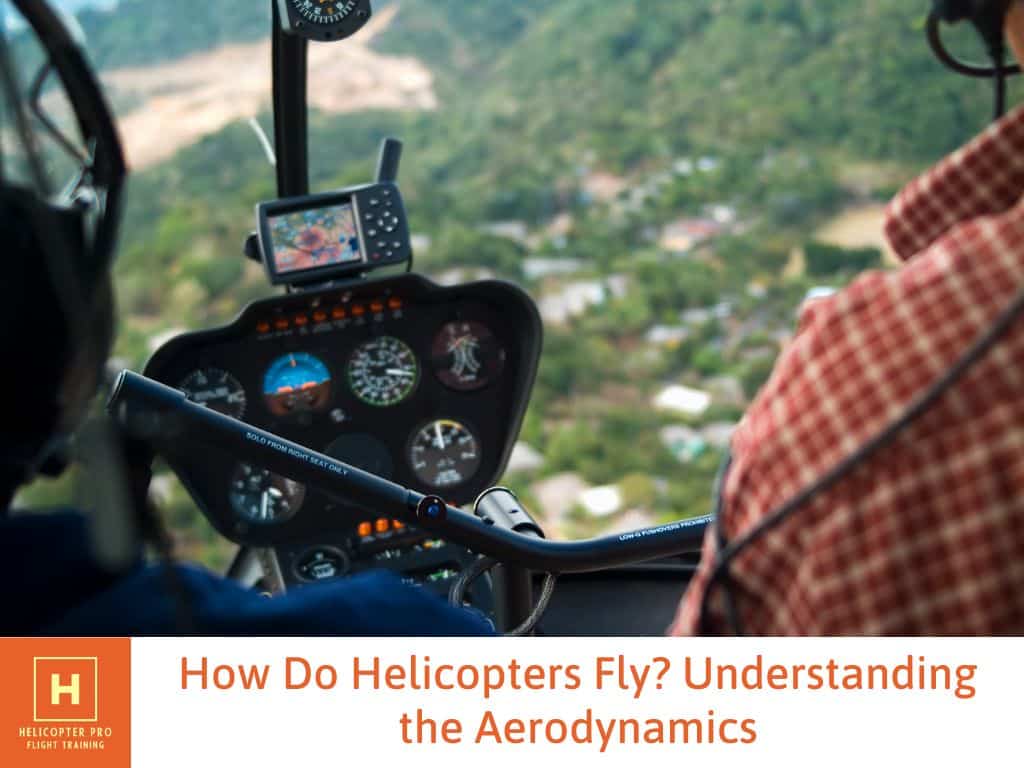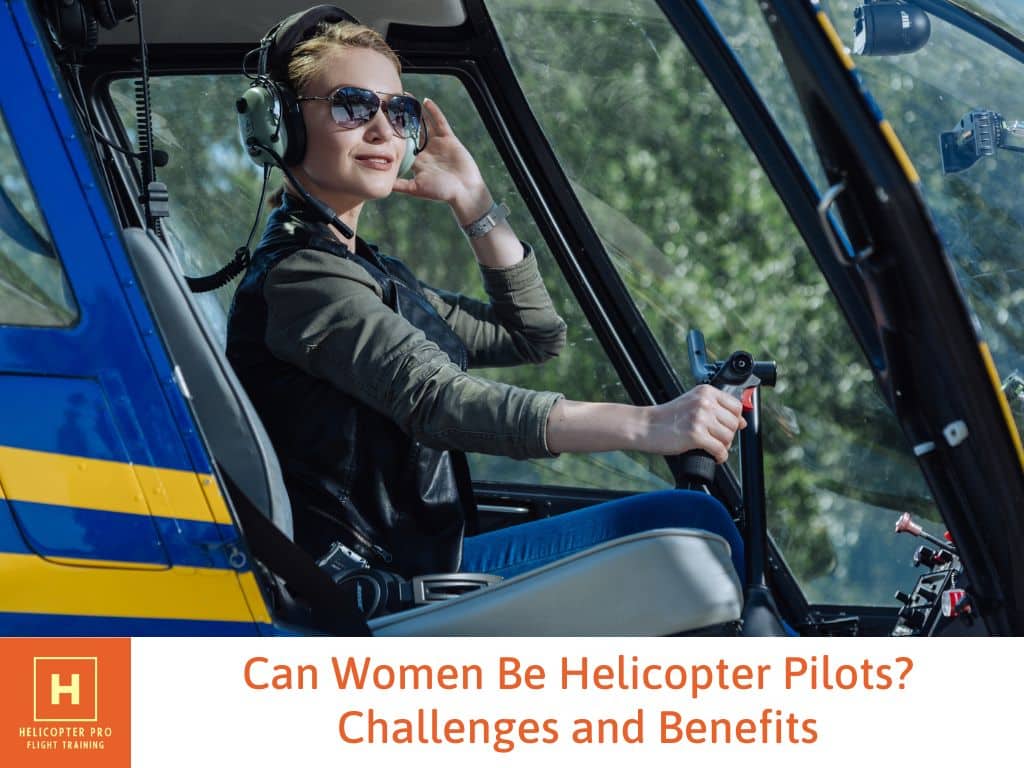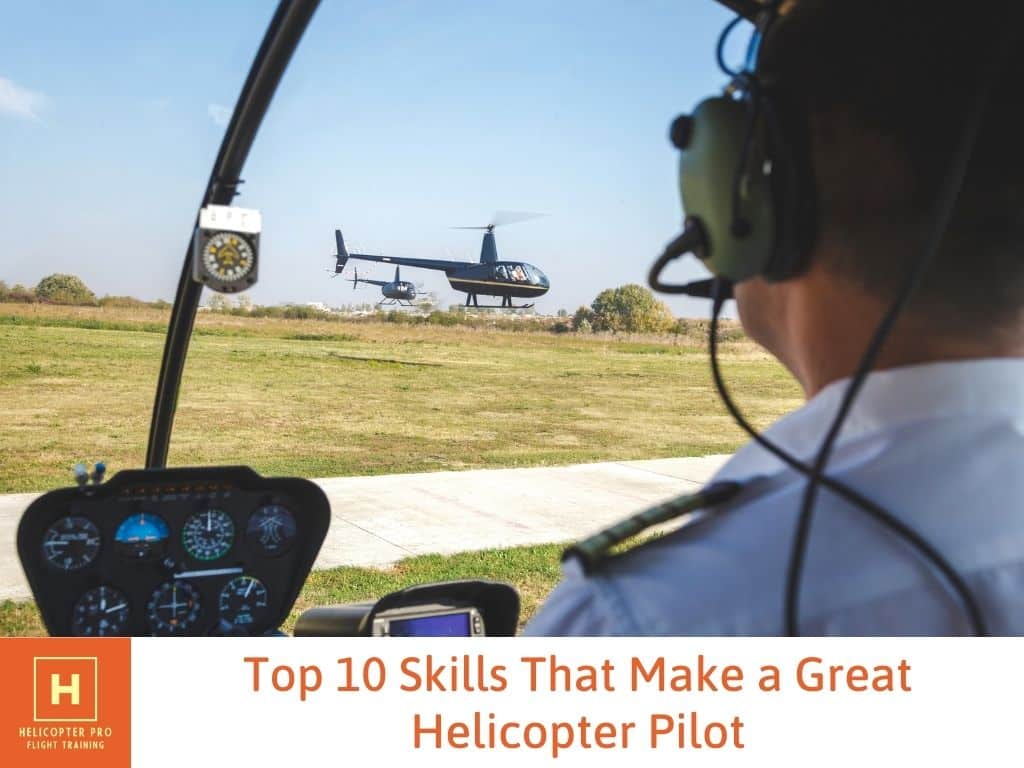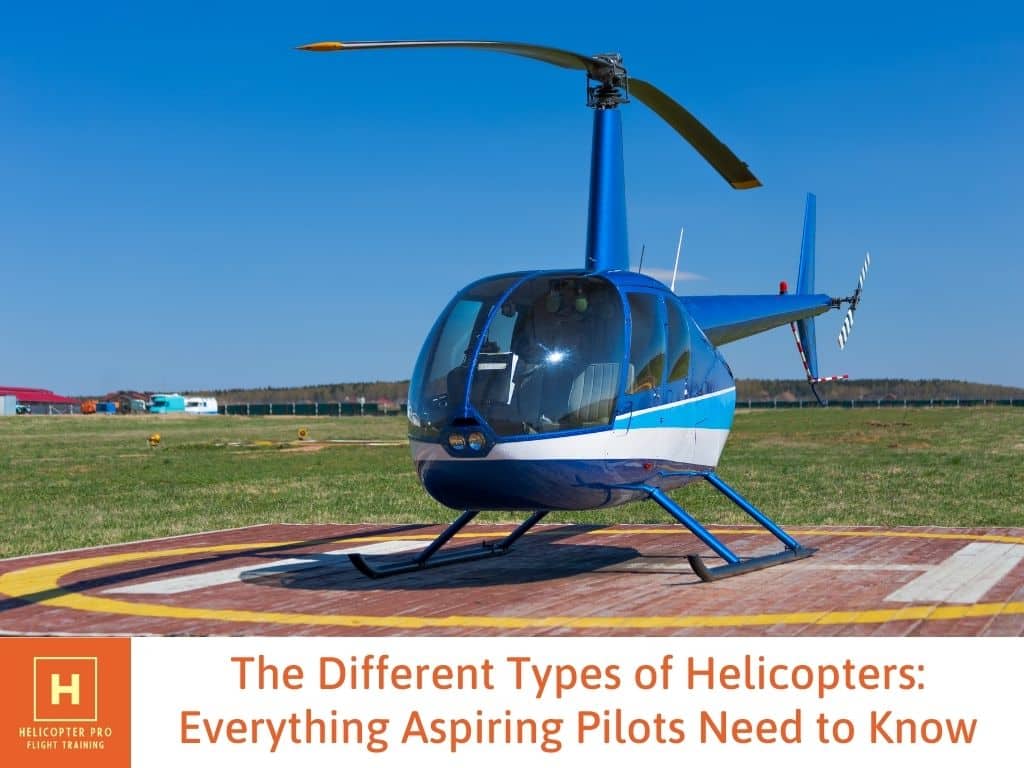
If you’re looking for a rewarding career, learning to fly a helicopter is the perfect choice. Becoming a helicopter pilot is full of possibilities, including unrivaled views, reaching great heights, and the satisfaction of mastering an incredibly complex skill.
Not to mention, the demand for pilots is high, offering impressive job prospects in diverse fields—from rescue services to tourism, news broadcasting, to cargo transportation.
But it can be hard for aspiring pilots to know where to begin. A great place to start is to have a solid understanding of the different types of helicopters and how they function within the industry. That way, you can have a better idea of how you can utilize your piloting skills.
Here’s everything you need to know about the most common types of helicopters and their applications:
1. Single-Main Rotor Helicopters
Single-Main Rotor helicopters or “monocopters” are one of the most common types of helicopters. They’re built with one large spinning blade, or rotor, for lift. They also have a smaller tail rotor to counteract its torque.
The two different-sized rotors allow the helicopter to maintain its balance and direction. It also helps the craft to make abrupt maneuvers and hover in one spot. The single-main rotor’s ability to hover, fly at low speeds, and land in confined areas offers flexibility that other aircraft cannot match.
Their hovering power makes them perfect for ariel photography and sightseeing tours. Moreover, their swift maneuverability and vertical take-off and landing help with military operations like surveillance, troop transport, or combat.
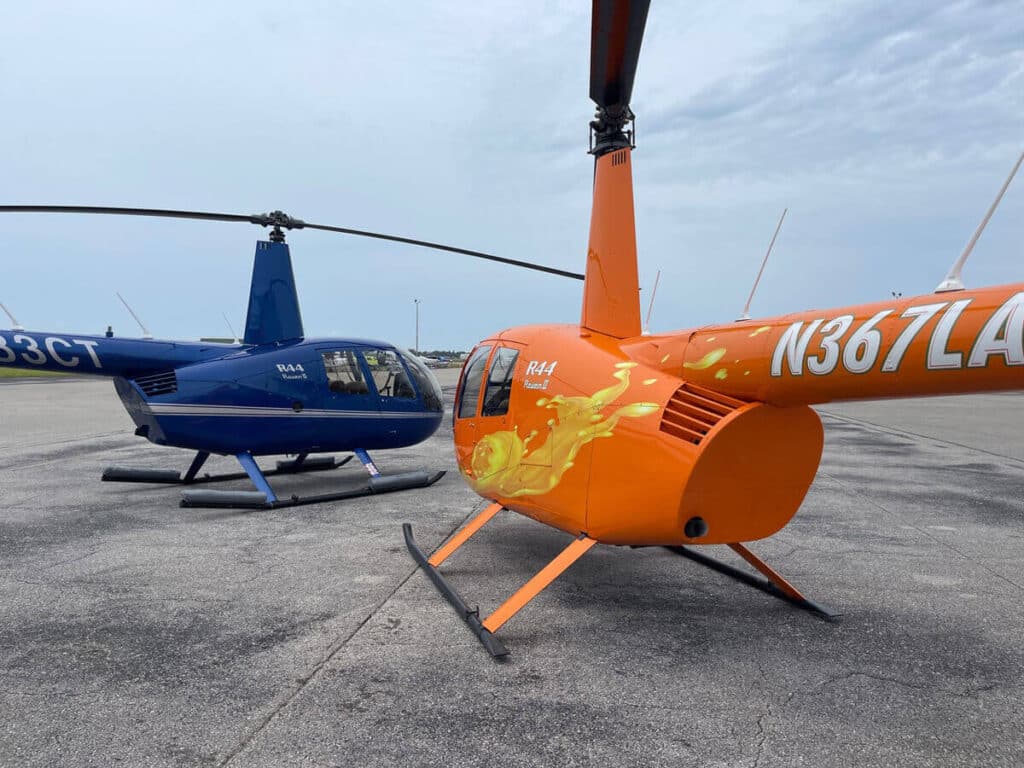
Single-main rotors are widely used in medical evacuations and search-and-rescue operations because they can access locations that ground vehicles often can’t. This versatility also extends to infrastructure development and maintenance, as they’re frequently employed in transporting heavy loads to remote or hard-to-reach locations for construction projects.
At Helicopter Pro, we choose to use the Robinsons R44 for our training because of its exceptional speed and comfortable ride. This aircraft enables us to provide a seamless and enjoyable experience for our trainees.
2. Tandem-Rotor Helicopters
A tandem-rotor helicopter has two large horizontal rotor assemblies. They are configured one behind the other, positioned at different heights so they don’t collide.
Unlike a single-rotor helicopter, which requires a tail rotor to counteract the torque produced by the main rotor, the tandem-rotor design utilizes counter-rotating assemblies. Additionally, by adjusting the collective pitch of the two rotors differently, the helicopter can be steered forwards, backward, or even sideways.
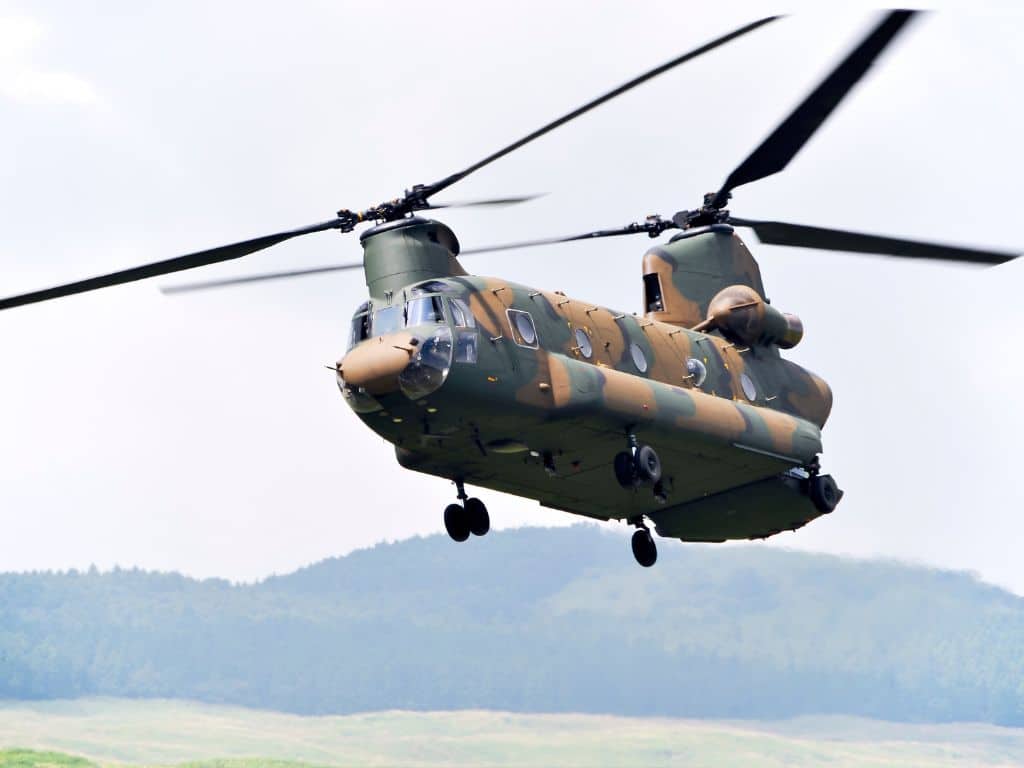
This unique design provides many advantages—primarily, it optimizes lift capacity, making it an excellent choice for transporting heavy cargo. In fact, tandem-rotor helicopters are celebrated for their robust lifting capability and are employed for troop transportation and heavy-lift cargo operations.
They also serve in firefighting, logging, and other roles where their powerful lift capacity is needed.
3. Compound Helicopters
Compound helicopters blend traditional rotorcraft design with additional propulsion systems and fixed wings. They rely on these fixed wings and thrust engines to supplement the lift provided by the main rotor, increasing their speed, fuel efficiency, and payload capacity compared to standard helicopters.
In this design, the main rotor doesn’t bear the sole responsibility of lift and forward momentum. This has the benefit of potentially increasing service life and reducing maintenance costs.
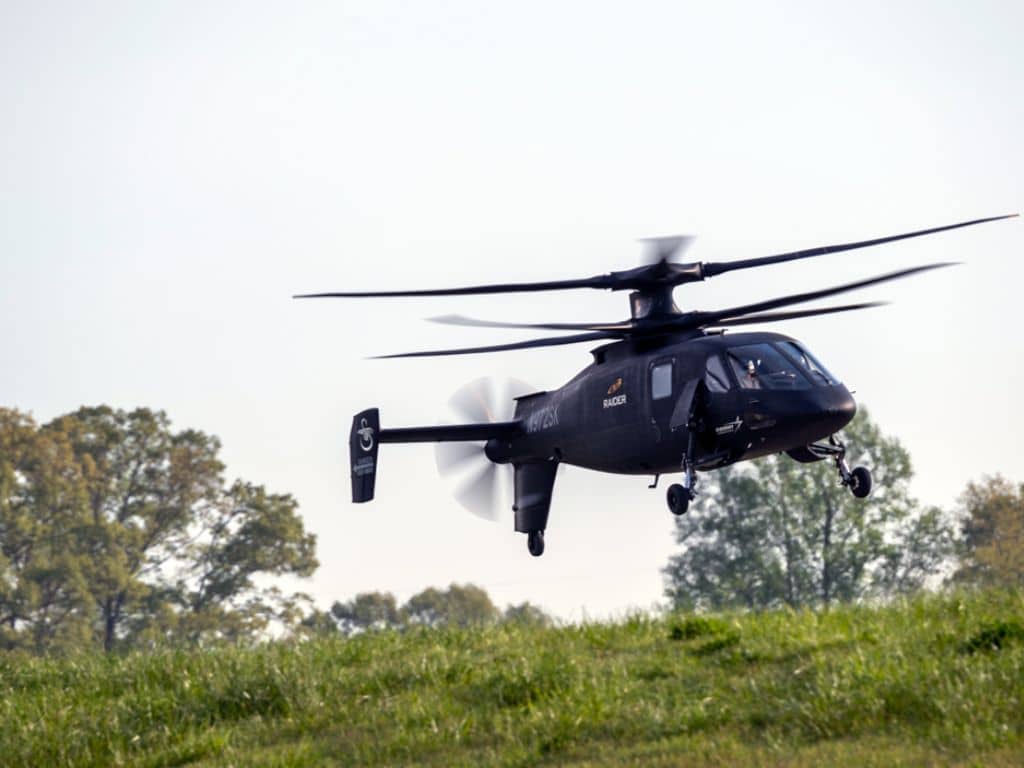
During operation, the compound helicopter uses its main rotor for lift during take-off and landing. When transitioning to forward flight, the fixed wings take over the lift function, freeing the rotor. This change enables the engines to concentrate on forward propulsion, further enhancing the efficiency of flight.
Compound helicopters are uniquely positioned for various applications with their ability to combine high speed and long range with the versatility of vertical take-off and landing positions.
In military use, their speed and range are beneficial for combat, search and rescue, and reconnaissance missions. The Sikorsky S-97 Raider, for example, is a high-speed scout and attack compound helicopter. Civilian uses can include air ambulance, police, and commercial passenger transport.
4. Tiltrotor Helicopters
Think of a tiltrotor aircraft as a mix between a helicopter and an airplane. Like a helicopter, it can take off and land vertically. Once it’s in the air, it can change how it flies to be more like an airplane, which can go faster and farther.
The way it does this is by tilting its rotors. At first, they stand upright to lift the aircraft up off the ground. Once it’s high enough, the rotors tilt forward, just like how an airplane’s propellers are positioned. This makes the aircraft quickly zip through the sky.
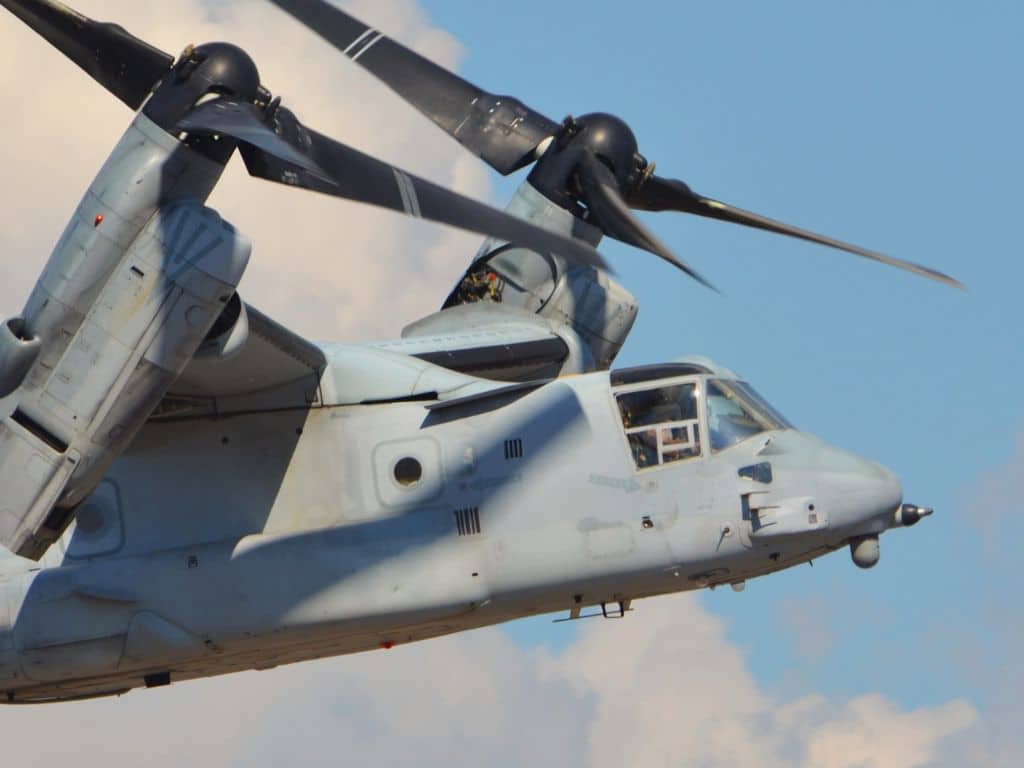
The great thing about a tiltrotor aircraft is that it’s super versatile. It can go fast and far like an airplane, but it doesn’t need a runway to take off or land. That means it can be used in places where there isn’t a lot of space, like in cities or on ships at sea.
The military employs them for the swift transportation of troops and equipment over extensive distances. Moreover, their speed and agility make them invaluable assets in search and rescue missions. The Bell Boeing V-22 Osprey is an example of a tiltrotor aircraft used in various roles by the U.S. military.
They’re also used for executive transport, offshore oil and gas industry support, and potentially commercial air travel. Their one-of-a-kind capabilities open up new possibilities in aviation that different types of helicopters just can’t offer.
5. Coaxial Helicopters
On a coaxial helicopter, the blades sit one on top of the other, spinning in opposite directions. This clever design cancels out the spinning force that can make a regular helicopter hard to control.
This leaves them with some cool benefits—they can carry more weight, control their movements better, and fly higher than regular helicopters. Plus, without needing power for a tail rotor, there’s more energy for lifting and moving around.
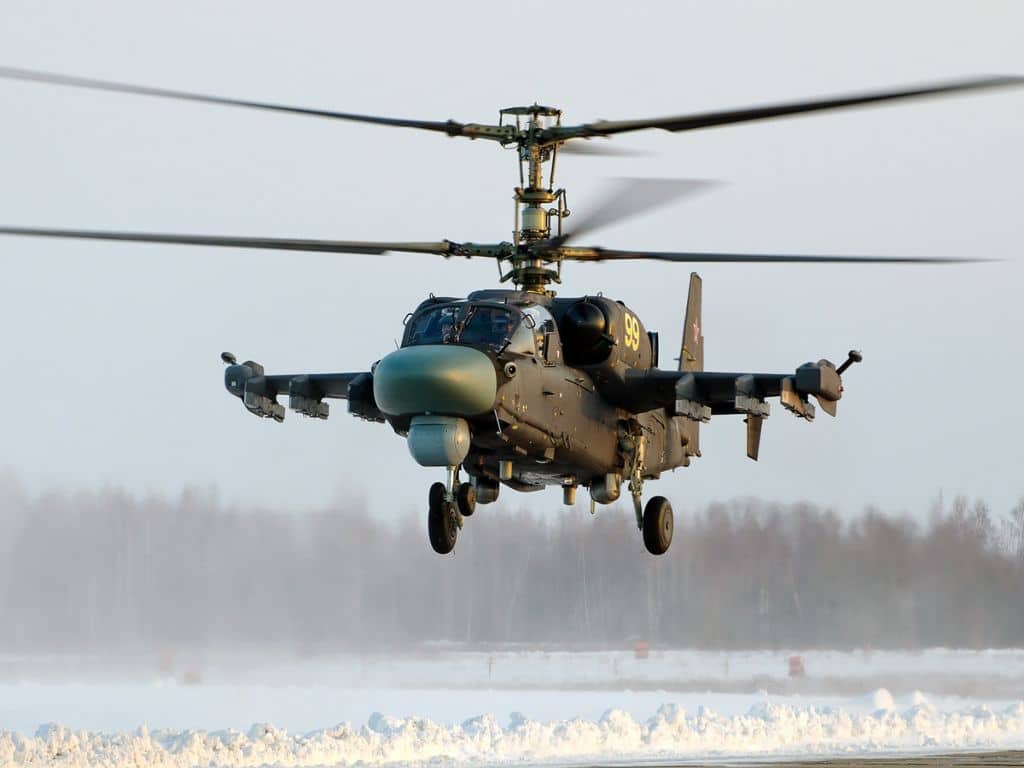
So, how do coaxial helicopters work? The two sets of spinning blades lift the helicopter into the air and keep it steady. The speed of the blades and their angle can be adjusted to make the helicopter move forward, backward, or to the side. And because there’s no tail rotor, there’s no risk of hitting it on something when flying low or landing in a tight spot.
Coaxial helicopters can do lots of different jobs. Some people even use them for personal transport due to their stability and drivability. The military uses them for watching over areas, moving troops, and combat. The Kamov Ka-50 “Black Shark” is a famous example of a military coaxial helicopter known for being nimble in battle.
6. Intermeshing Rotor Helicopters
Think of an intermeshing airplane like two spinning tops placed side by side; their tips angled slightly towards each other. The tops represent the airplane’s two rotors, or propellers, that spin in opposite directions, weaving together without touching. This is considered a dual-rotor helicopter, with the rotors on angled pylons.
They’re also called “synchropters” because of the synchronized rotor movement. Their opposing spinning directions balance each other out. Adjusting the angle of the rotor blades, like tilting a spinning top, changes the direction of the plane. This design gives the aircraft great stability, maneuverability, and lifting power.
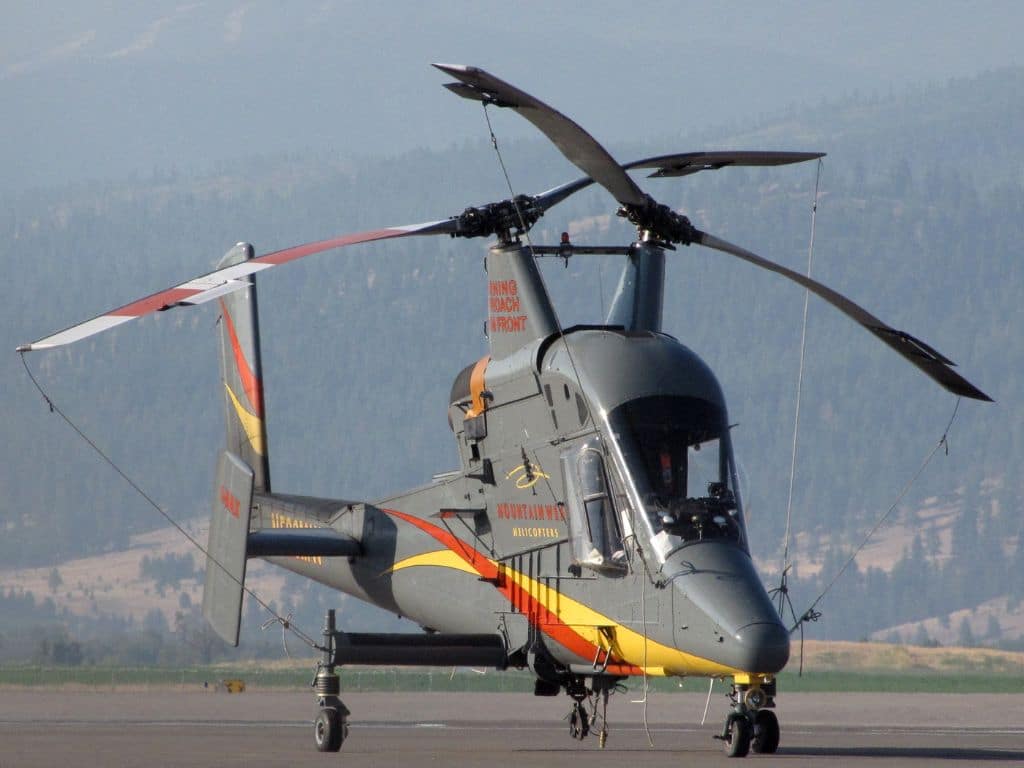
Intermeshing helicopters are super-efficient when hovering, can carry heavy loads compared to their size, and their compact design makes them perfect for tight spaces. These attributes make them ideal for jobs like moving heavy objects in the air (aerial crane services), fighting fires, logging, and transporting cargo.
A famous example is the Kaman K-MAX. This chopper was designed for aerial lifting, and its ability to carry heavy loads and stay stable in the air makes it incredibly useful in tough or high-risk situations.
7. Electric Helicopters
Electric helicopters are a type of rotorcraft powered by electric motors, with energy stored in batteries instead of using traditional combustion engines. They operate similarly to their conventional counterparts, with the primary difference being the power source.
The advantages of electric helicopters include lower operational and maintenance costs, less vibration, quieter operation, and zero direct emissions. They are also safer than traditional helicopters, with fewer mechanical components that could potentially fail.
The working principle of electric helicopters involves using electric power to drive the rotors for lift and control. The design can range from traditional single-main rotor helicopters to multirotor designs.
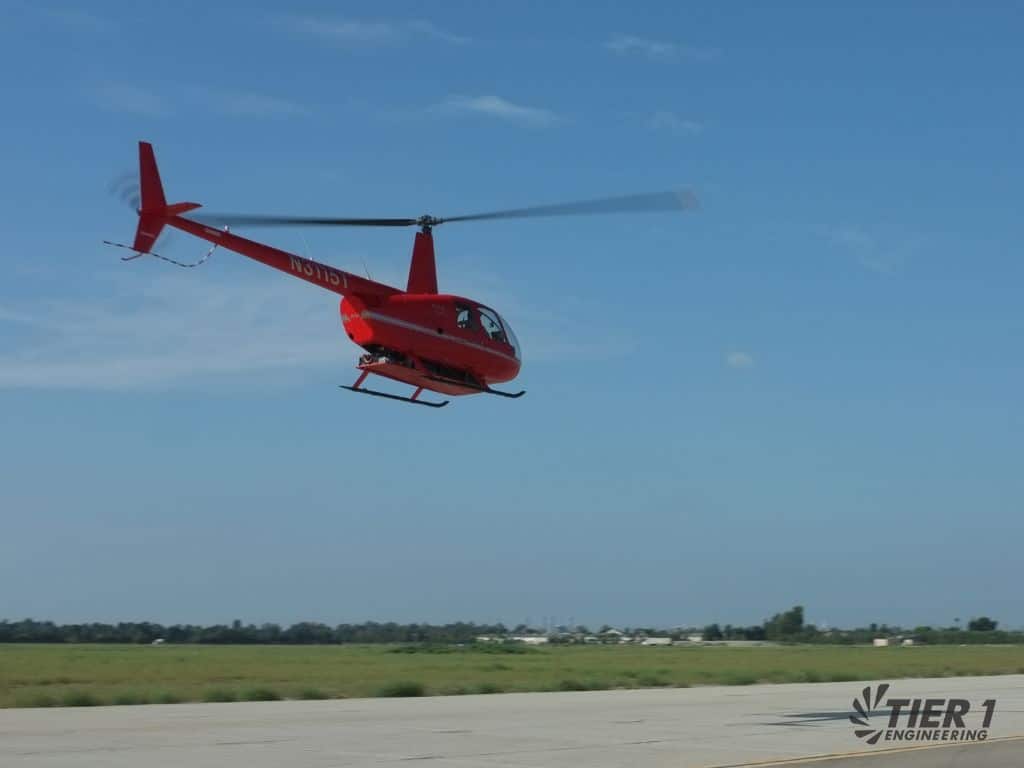
Electric helicopters are gaining popularity. For short-range transportation, tourism, and pilot training, they offer a cleaner, quieter alternative. Electric drones, a type of multirotor electric helicopter, are used extensively in photography, filming, agriculture, and infrastructure inspections.
As battery technology advances, larger electric helicopters could be used for air ambulance services, cargo delivery, and potentially commercial air travel, drastically reducing the aviation industry’s carbon footprint.
Training and Requirements for Helicopter Pilots
Now that you know more about the different types of helicopters, let’s go over how you can receive your pilot license.
The requirements typically include being at least 17 years old (for a private license), 18 for commercial, having a high school diploma or equivalent, and meeting the physical and mental standards required to fly. Becoming a pilot requires significant training, including ground school to understand aviation principles and flight school for practical skills.
You’ll need to have a certain number of flight hours in order to get your license. Private pilots need 40 hours total, which includes both flight training and solo flying. Commercial pilots first need to receive their Private Pilot License (PPL). In total, they’ll need to complete 150 hours of flight time.
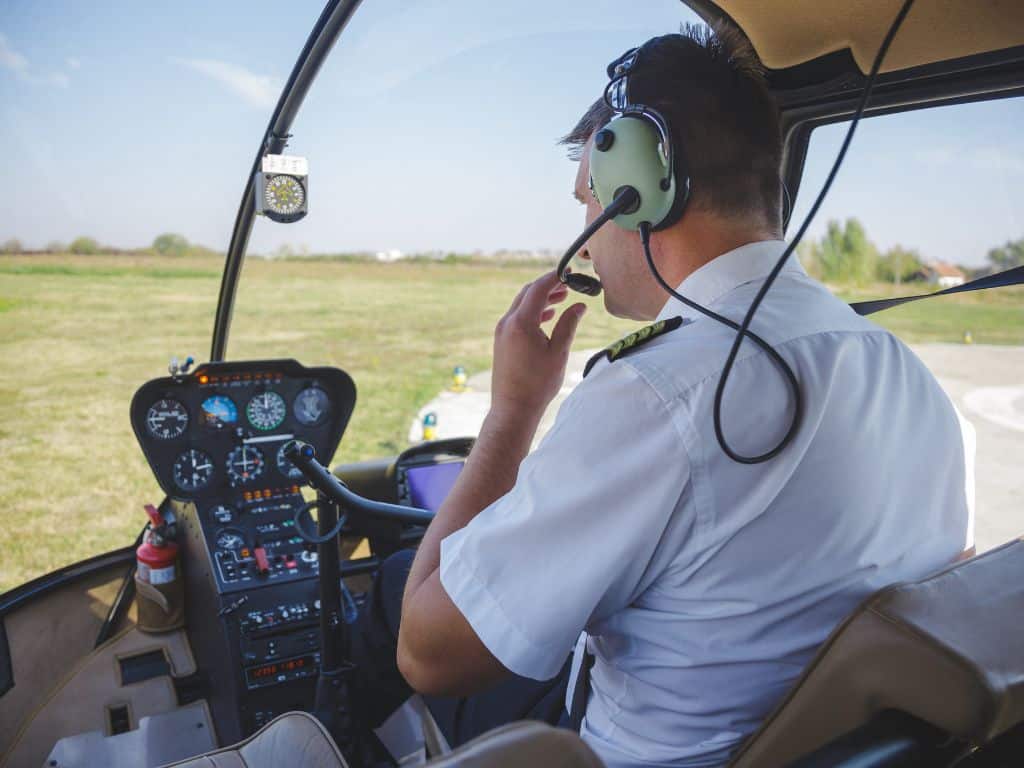
The final step in receiving your helicopter license is to take the required physical and written exams. The practical exam process involves showcasing your pilot skills while being overseen by an FAA examiner. For the written exam, you’ll need to know all about the technical aspects of aviation, like navigation, systems, and regulations.
It doesn’t end there—even after completing the training and passing the exams, you’ll need to keep your skills sharp with ongoing training. Regular medical examinations are also mandatory to ensure your safety as well as your passengers.
How to Find the Right Flight School
Choosing the right flight school is crucial to a successful pilot career. Start by defining your needs. Do you want to fly recreationally or professionally? What’s your budget?
Once you better understand what you’re looking for in a flight school, research schools in your preferred locations. Examine their curriculum and see if they provide specific training like instrument or instructor ratings. Good instructors are vital; they should be experienced, approachable, and effective communicators.
The school’s fleet is equally important. The helicopters should be well-maintained and equipped with modern technology. Additionally, some flight schools offer affordable training options like the TH-100 ATD stimulator. This is an advanced system that involves weather simulations, industrial-grade flight controls, and global navigation data in a safe environment.
Don’t forget to look into the school’s reputation. Read reviews, check out their website, talk to former students about their experiences, and take a look at their safety records. A well-regarded school often has a strong industry network, which can help with job placements.
Finally, visit the schools if possible. Meet the instructors, inspect the helicopters, and gauge the atmosphere. Your gut feeling is often the best guide. Most importantly, don’t make a brash decision: finding the right school is a major step toward your flying dreams.
Conclusion
It’s clear that there are many different types of helicopters, and this list has only scratched the surface. Learning more about their unique configurations and abilities is fascinating, and it can make your journey into aviation more exciting. It’ll also help deepen your understanding of the industry and give you a better idea of what type of career you may want to pursue.
If you are serious about a career in helicopter aviation, you need a flight school where you can reach and exceed your goals. Helicopter Pro offers an encouraging, state-of-the-art flight training experience with unmatched quality. Learn more about our comprehensive and flexible training options today.
